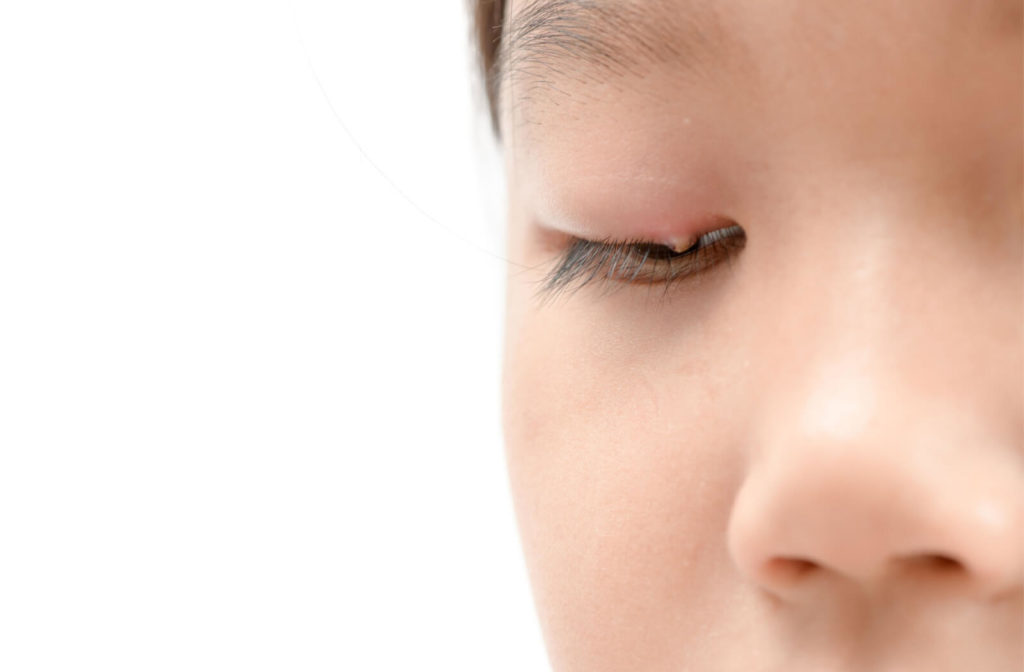Most of us are aware that brushing our teeth helps to prevent plaque buildup, as well as the development of cavities and gum disease. Well, cleaning your eyelids and eyelashes should also be part of your daily hygiene routine too!
Cleaning your eyelids removes debris that can accumulate over time and cause meibomian gland obstruction, also known as meibomian gland dysfunction (MGD), or even other eye diseases. Prevention of MGD using early detection and intervention is essential to the long-term health and comfort of your eyes.
If you’re experiencing the side effects of MGD, such as dry eye disease, you might be wondering how long these irritating symptoms may last. Meibomian gland dysfunction can be a chronic condition lasting for months to years, often requiring ongoing management to alleviate symptoms.
Golden Vision offers both in-office and at-home treatments to effectively provide relief to those irritation symptoms.
What are Meibomian Glands?
Meibomian glands can be found in both the upper and lower eyelids. Each eyelid contains about 25 glands that are arranged vertically near the lashes. These glands secrete oil that combines with the tear film to slow tear evaporation. A healthy tear film is made up of three layers:
- Fatty oils
- Aqueous fluid
- Mucus
When these glands become blocked, they stop secreting oils and eventually die. A variety of eye problems can involve the meibomian glands. Among these are:
- Sjögren’s Syndrome
- Blepharitis
- Dry Eye
What is Meibomian Gland Dysfunction?
MGD is a common eye condition that many people are unaware they have. Though MGD refers to a variety of conditions, the most common symptoms are blocked oil glands and thickened secretions.
If untreated, these chronically clogged glands become unable to secrete oil, resulting in permanent changes in the tear film as well as chronic dry eyes.
Signs & Symptoms of Meibomian Gland Dysfunction
If any of the following symptoms feel familiar, you may be experiencing MGD:
- Gritty sensation
- Watery eyes
- Sensitivity to light
- Inflamed eyelids
- Blurred vision
- Difficulty wearing contact lenses
Causes of Meibomian Gland Dysfunction
Meibomian gland dysfunction can be caused by a number of different factors, including:
- Low blink rate
- Hormonal changes
- Bacterial infections
- Rosacea
- Aging
Your eye doctor will be able to assess your eye health to determine the cause and treatment route for your MGD symptoms.
Can Meibomian Gland Dysfunction Be Cured?
Unfortunately, MGD is not curable, however, there are many treatment options that can provide relief, even for several months. These treatments include at-home remedies as well as advanced treatments available at Golden Vision.

Treating MGD at Home
Your optometrist will discuss ways to improve eye hygiene in order to remove dead skin, oil, and bacteria that have accumulated. Please be gentle with the skin on your upper eyelids.
Because this is a chronic condition, treatment and prevention must be carried out daily and should include all or some of the following:
Warm Compress
Some doctors recommend wiping the closed eyelids with a warm, moist washcloth. Others suggest applying heat to the eyelids with a specially designed eye mask. In either case, the eyelids are heated and then massaged to expel the melted oils from the glands.
Lid Scrubs
Lid scrubs can aid in the removal of oil, bacteria, and debris that clog the oil gland openings. Gently scrub along the lash line on the top and bottom eyelids with a Q-tip, your fingers, or the tips of a warm washcloth.
You can use a gentle soap, or diluted baby shampoo (a few drops in a small cup of water)- anything that will not burn or irritate your eyes. If you have any questions about what to use, consult your doctor. Lid scrubs should be performed once per day.
Advanced MGD Treatments
There are also several advanced methods for physically alleviating the symptoms of meibomian gland dysfunction. Your optometrist may recommend the following approaches for you:
LipiFlow
This device is used by your doctor to deliver both heat and gentle pressure lid massage to improve oil quality and open the meibomian glands. The device’s warming portion resembles a large lens that covers even the whites of the eyes.
In addition, during a 12-minute treatment, an eyecup with an inflatable air bladder massages both the upper and lower lids.
TearCare
Another advanced treatment for MGD is TearCare. The TearCare System is made up of single-use adhesive heating patches that are applied to the outside of the eyelids.
A cable connects the patches to a small, reusable handheld heating unit. The eye doctor squeezes the lids after the 12-minute heating period to open and drain the clogged meibomian glands.
The TearCare system was found to be an effective treatment option for MGD and dry eye disease in a pilot study, and it reduced signs and symptoms of dry eyes for at least six months.
OptiLight
Intense pulsed light (IPL) therapy, such as Optilight by Lumenis, works by combating meibomian gland dysfunction, reducing Demodex mites, fighting inflammation, and focusing on abnormal blood vessels.
IPL treatment involves the application of intense pulses of visible and infrared light to the eyelids. Each treatment lasts approximately 20 minutes. Multiple treatment sessions are usually scheduled about a month apart to produce long-lasting effects.
See Your Optometrist Today
Only an eye doctor can determine whether you have meibomian gland dysfunction and recommend the best MGD treatment options for your specific needs. While MGD can cause significant discomfort and dry eyes, it is treatable, especially if caught early.
Book an appointment with our team if you have signs and symptoms of MGD.












